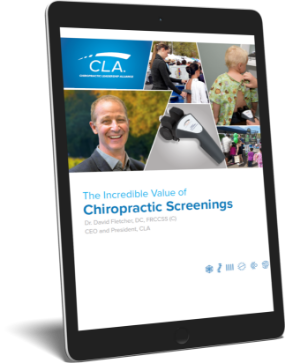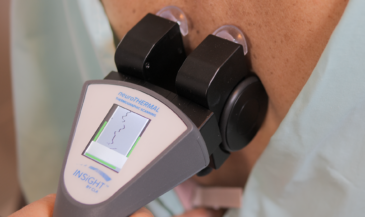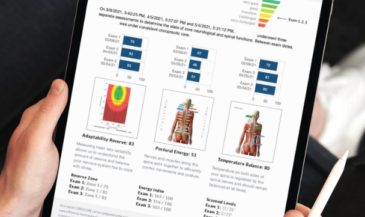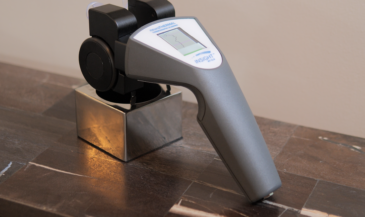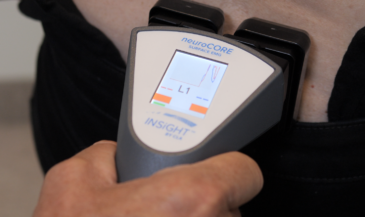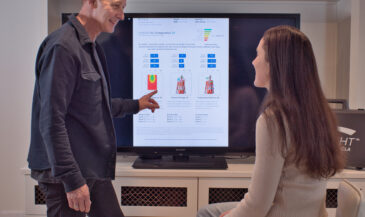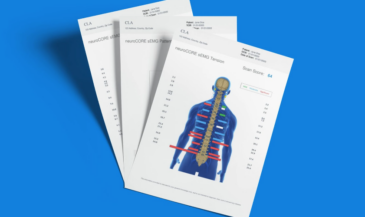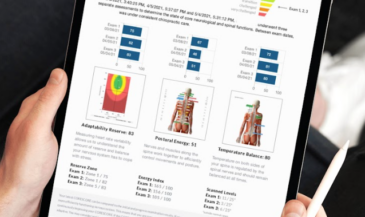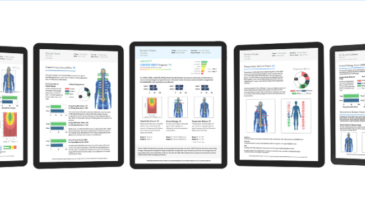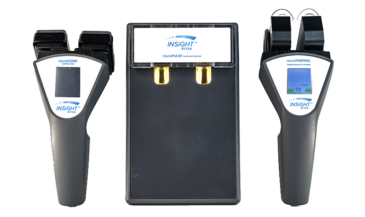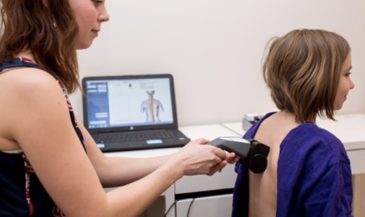The nervous system is the command center of the body, influencing everything from muscle movement to digestion. Yet, for many chiropractors, the role of a nervous system scan remains the second story behind spinal care. While traditional methods like X-rays focus on structure, nervous system scans dive deeper into function.
Nervous system scans,like the INSiGHT scanning technology, are essential for understanding and improving your diagnostic capabilities, improving patient outcomes, and providing you with an edge in the competitive world of family chiropractic practice.
What is a Nervous System Scan and How Does It Work?
A nervous system scan is a non-invasive assessment tool that evaluates how well the central nervous system is functioning. Unlike X-rays, which provide a static image of the spine, these scans measure nerve function, revealing where stress or interference is impacting the body.
Different types of scans include:
- EMG scans, which track neurological activity in the muscles.
- Thermal scans, which measure temperature changes along the spine to detect areas of inflammation or nerve interference.
- HRV scans, which evaluate the balance between the sympathetic and parasympathetic nervous system.
These scans provide a dynamic, functional view of a patient’s health, helping chiropractors uncover root causes rather than just treating symptoms.
Why Understanding the Nervous System is Vital in Chiropractic Care
Chiropractic care is rooted in the idea that the nervous system controls the body’s ability to heal and regulate itself. When the spinal nerves are under stress, the whole system can fall out of balance.
By integrating nervous system scans, chiropractors can:
- Identify areas where the nervous system is struggling to communicate effectively.
- Target adjustments that restore balance and function.
- Provide data-driven care that resonates with patients.
In short, understanding the function of the nervous system takes your chiropractic approach from reactive to proactive.
How Nervous System Scans Compare to X-Rays
Both X-rays and nervous system scans are valuable tools, but they serve different purposes. While X-rays reveal structural misalignments, nervous system scans measure how those misalignments are impacting function.
For example:
- X-rays might show a shifted vertebra, but they won’t reveal if it’s disrupting nerve flow or causing inflammation.
- A nervous system scan pinpoints how that vertebral shift is affecting the surrounding nerves, muscles, and organs.
Combining these tools gives a complete picture, allowing for more precise and effective care.
When the central nervous system is disrupted by stress, injury, or subluxations, the effects can ripple throughout the body. Patients might experience:
- Chronic pain or tightness.
- Immune issues.
- Difficulty regulating digestion or sleep.
A nervous system scan helps chiropractors pinpoint these disruptions, addressing the root cause and restoring the patient’s overall health.
The Power of EMG Scans in Measuring Nerve and Muscle Function
EMG scans are one of the most powerful tools in a chiropractor’s arsenal. They measure the neurological activity of the muscles, revealing patterns of tension and imbalance.
Why does this matter? Because muscles act as a feedback loop for the nervous system. If the muscles are overactive or underactive, it’s often a sign that the nerves are struggling to communicate.
By using EMG scans, chiropractors can:
- Detect areas of stress before they become symptomatic.
- Tailor adjustments to improve nerve conduction.
- Track progress over time, showing patients tangible results.
How INSiGHT Scans Reveal the Impact of Subluxations
Subluxations are a key focus of chiropractic care, but understanding their impact requires more than just feel or intuition. INSiGHT scans measure the stress and tension caused by these misalignments, revealing how they’re affecting the nervous system.
For example:
- A neurothermal scan of a child struggling with focus might reveal how stress along the spine is interfering with the autonomic nervous system.
- An EMG scan detects patterns of muscle imbalance caused by nerve pressure on the right and left sides of the body.
- An HRV scan measures the balance between the sympathetic (fight or flight) and parasympathetic (rest and digest) systems. This provides a marker of neurological health and helps chiropractors address deeper issues affecting a patient’s overall brain function and coordination.
This data not only improves your adjustments but also helps patients understand why ongoing care is necessary.
Why Nervous System Scans Are Essential for Pediatric Chiropractic Care
Children’s bodies are still developing, and their nervous system is still learning how to function at full capacity. Early interference can lead to long-term issues, from sensory integration disorders to immune challenges.
The exciting thing about pediatric chiropractic is the ability to intervene early. Scans like HRV or neuroTHERMAL scans help chiropractors see how the nervous system is functioning and track progress in areas like:
- Brain function and development.
- Coordination and muscle tone.
- Immune system resilience.
For parents, this offers peace of mind and a clearer understanding of their child’s health journey.
How Scans Help Chiropractors Track Progress and Build Trust
One of the main benefits of nervous system scanning is how it improves patient communication. Instead of asking patients how they feel, you can show them measurable data on how their body is improving.
Patients can see:
- Areas of improvement after an adjustment.
- The long-term impact of care on their nervous system.
- How their stress levels are affecting their overall health.
This builds trust and keeps patients engaged in their care plan, improving retention and outcomes.
How to Implement Scanning Technology in Your Chiropractic Practice
Integrating scanning technology into your practice doesn’t have to be complicated. Start with a tool like INSiGHT Scanning Technology, which offers multiple scan types in one system.
Steps to get started:
- Introduce scans during initial patient evaluations to establish a baseline.
- Use scan results to guide adjustments and track progress.
- Educate patients with clear, visual data that explains the importance of their care plan.
With tools like these, you’re not just adding technology. You’re elevating your practice and providing better care.
Key Takeaways
- Nervous system scans reveal the function behind the structure, offering insights X-rays can’t.
- Tools like EMG scans and neuroTHERMAL scans highlight stress, tension, and interference in the nervous system.
- Combining scans with traditional chiropractic care improves accuracy and patient outcomes.
- Pediatric chiropractic care benefits immensely from these tools, allowing for early intervention and better development.
- Incorporating scanning technology like INSiGHT builds trust and helps patients stay committed to their care.
Nervous system scans aren’t just another tool—they’re a game changer for chiropractors who want to provide cutting-edge care. Start integrating them today, and watch your practice and patient outcomes soar.
Book a call with an INSiGHT Advisor today to learn how you can bring this transformative technology into your chiropractic clinic so you can lead your patients on a journey toward optimal health and wellness.




